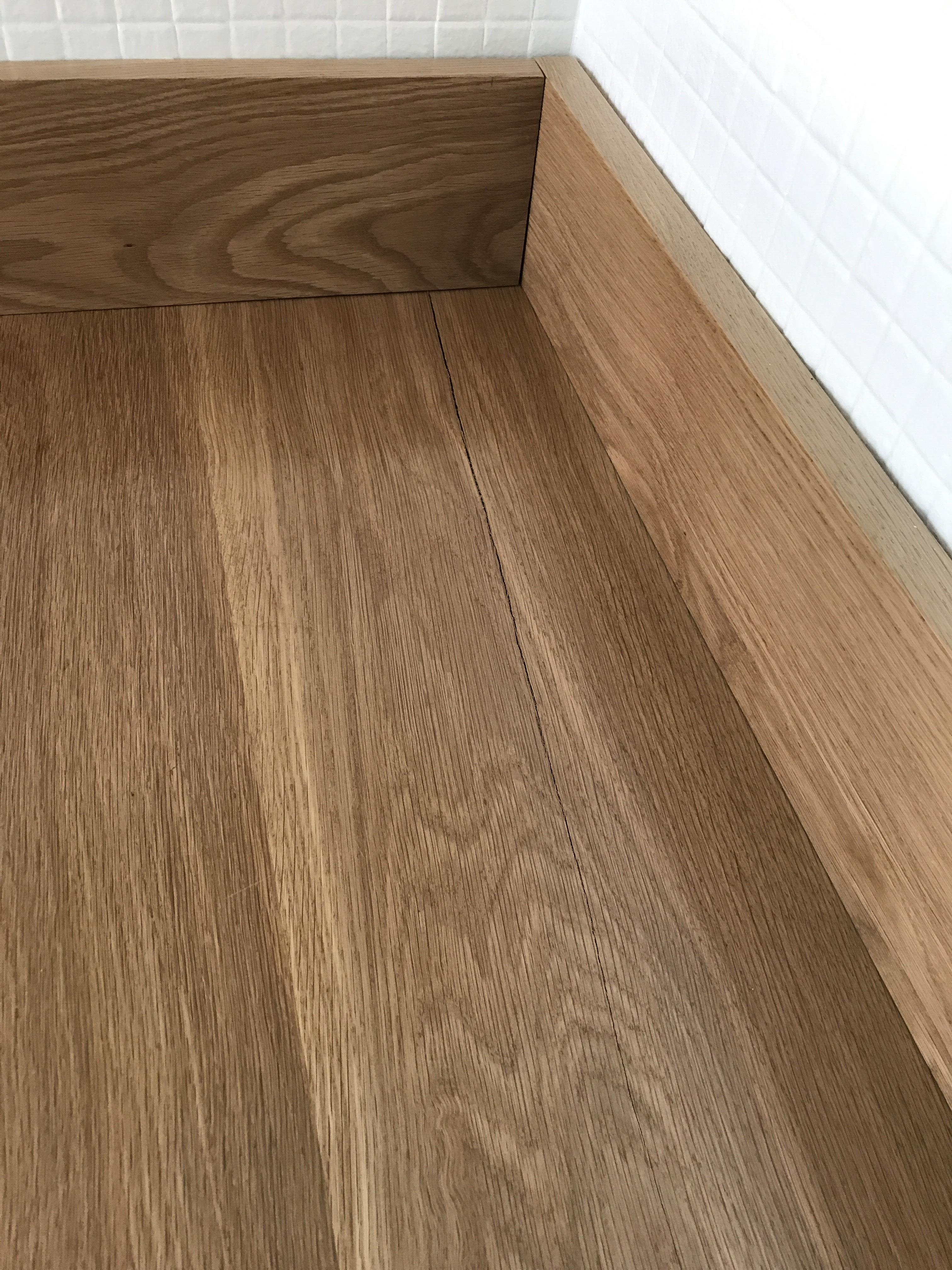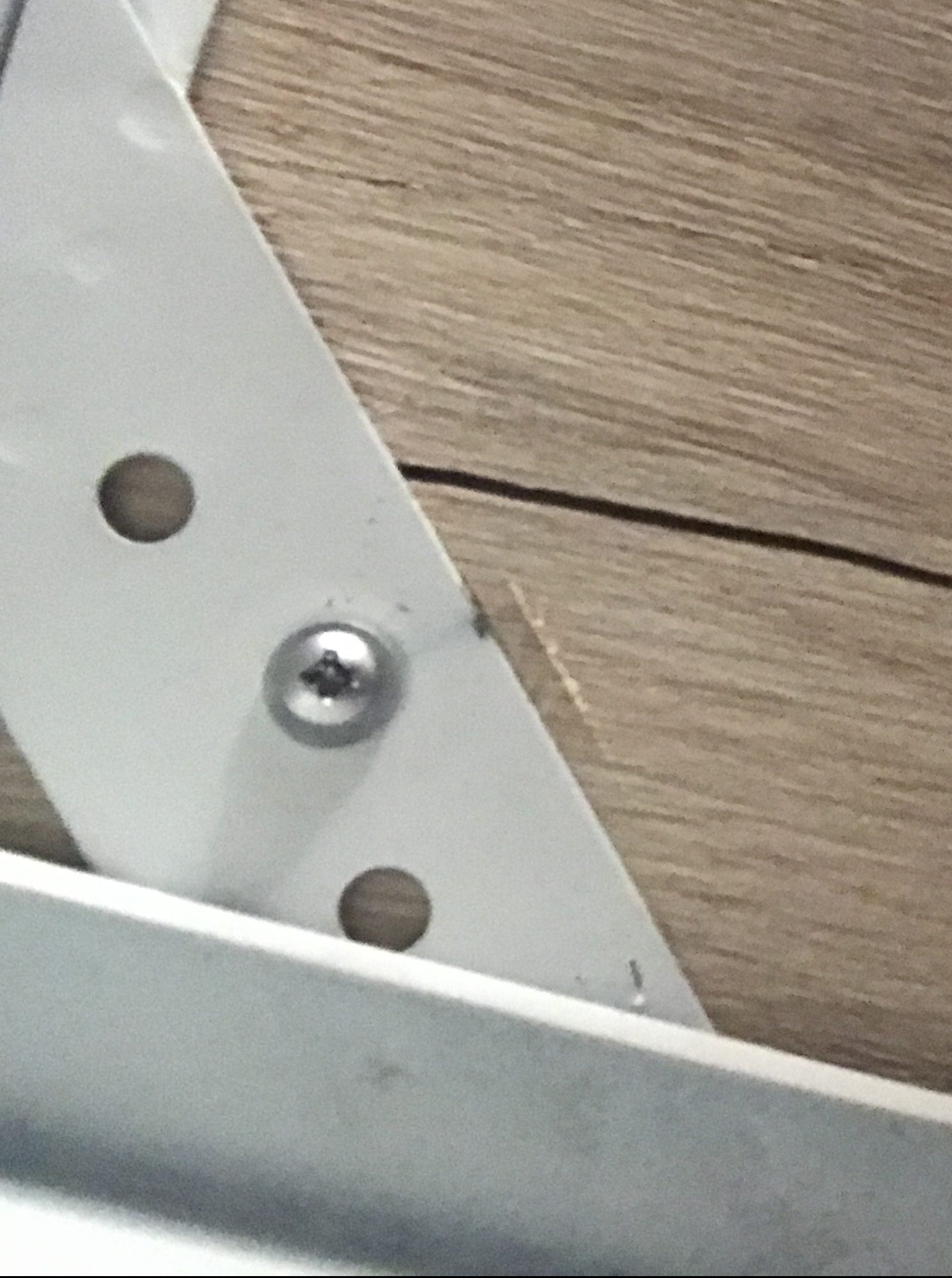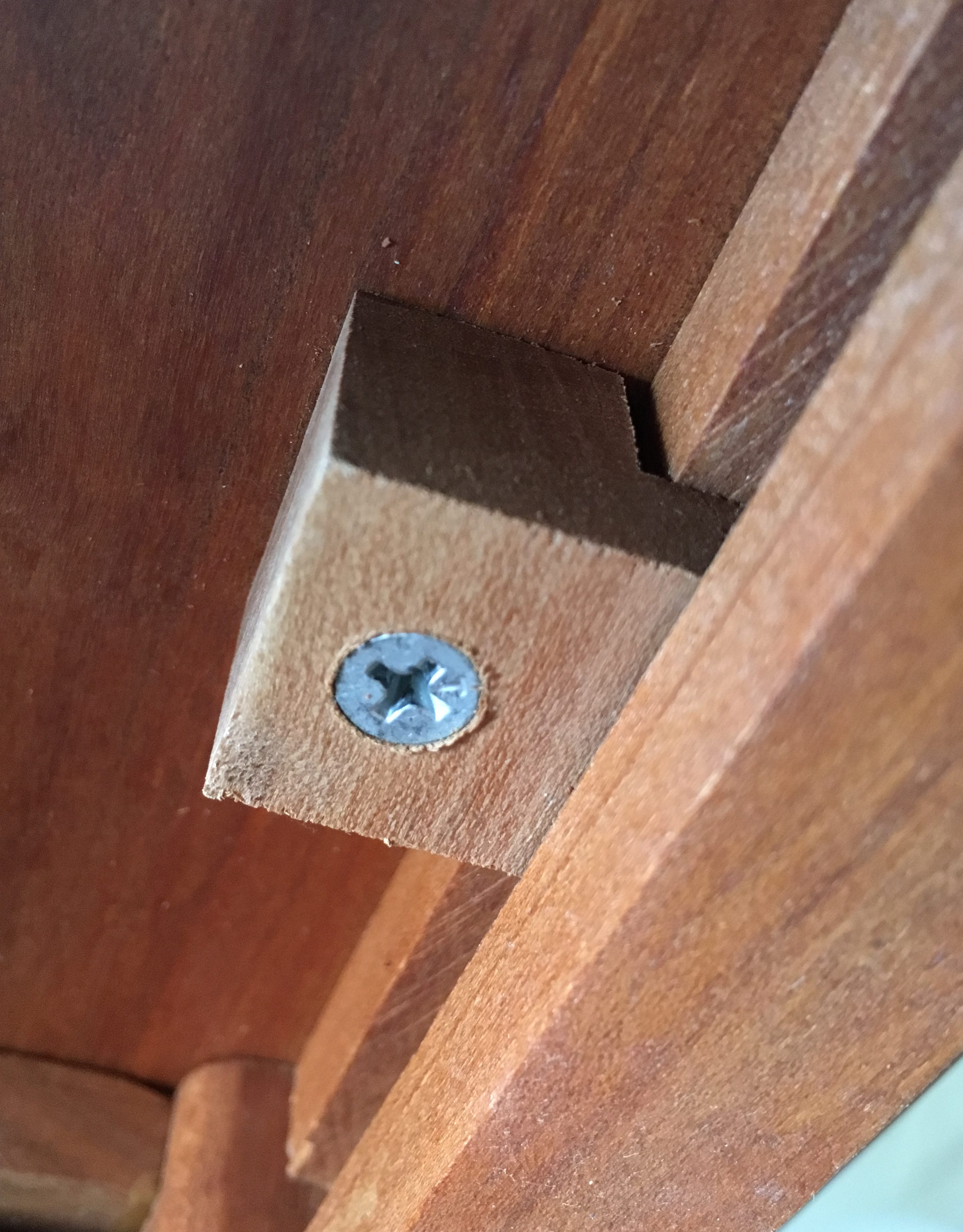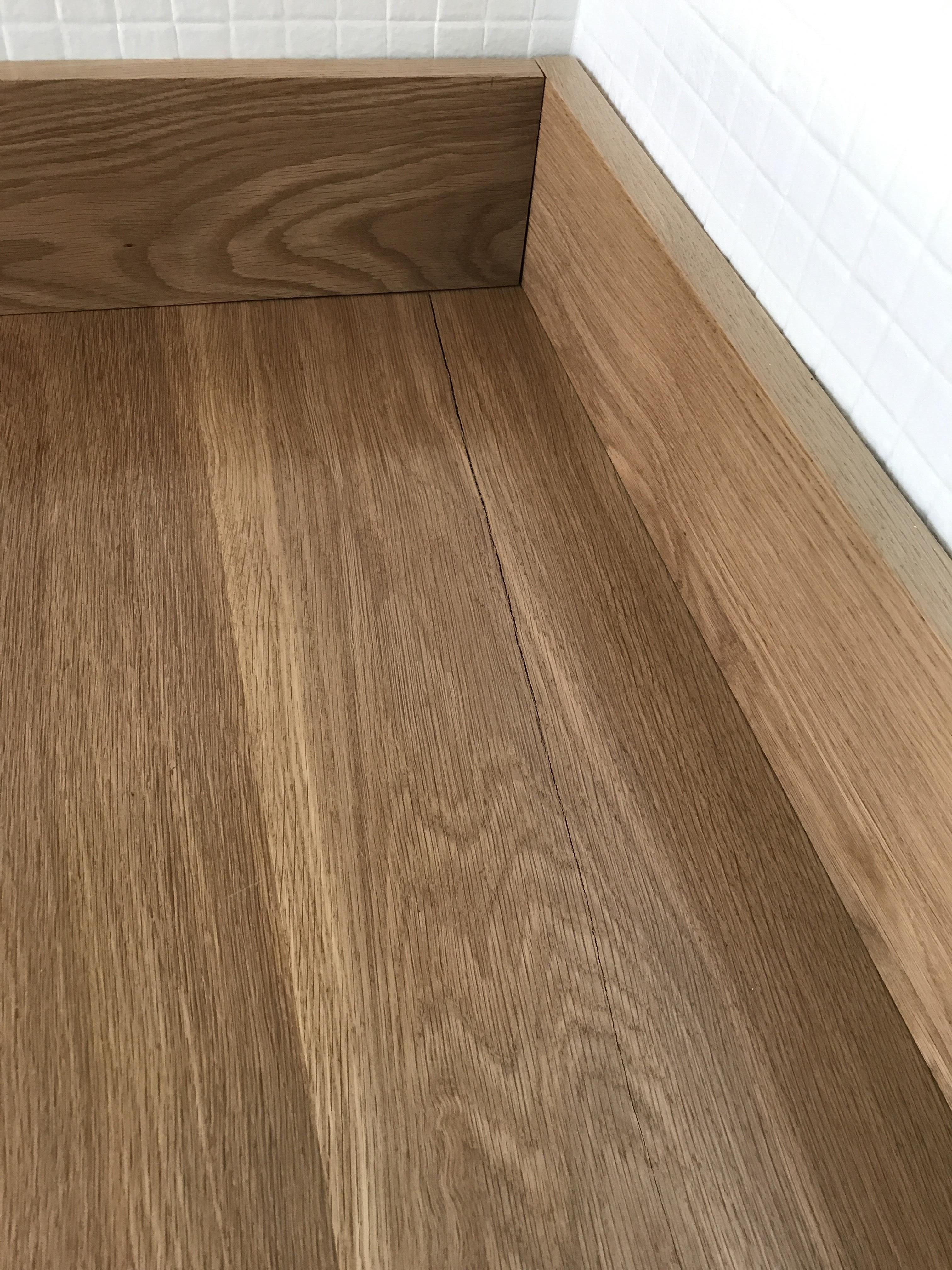Recently, I got a question from a customer regarding a crack forming in his solid wood countertop. He built the top out of flat sawn white oak lumber and he wanted to figure out what caused the crack and hopefully, how he could repair it. Luckily, the repair is simple (just some glue and clamps), but he really needed to address the cause of the problem or the countertop would most likely crack again.

This countertop split in the back corner because it was screwed firmly in place and couldn’t move.
When he sent me photos of the crack, he also sent me photos of the how he attached it to the cabinets, which was very helpful. The vintage metal cabinets have a bracket in each corner with a hole just large enough for a screw, but not large enough to allow for any movement in the top. In this case, the wood was stuck in place and had no choice but to split when it shrunk in width.

This view from inside the cabinet shows how the top was attached with no room for movement.
I recommended to simply make the holes in the metal bracket bigger and to add a washer or use a large-headed screw to allow the top to move side to side while still being held down. The secret is to tighten the screws just enough to hold the top in place, but loose enough to allow it to move if the wood starts to pull.
This particular solution was pretty simple, but only because I have seen it many times before, and I knew what caused it. Without understanding how wood moves, the diagnosis wouldn’t be so apparent. Even though most people don’t worry about wood movement as much as I do, I always try to get them to understand the most basic premise, which is that wood moves more in width than it does in length, and you need to allow for that movement.
In woodworking in general, this disparity in movement is referred to as a “cross-grain situation”, when two pieces of wood come together with grain perpendicular to each other, then they want to pull in opposite directions. It happens all of the time in furniture construction, and it must be addressed to avoid catastrophic failures. In the example above, the setup was the same as a cross grain situation because the metal cabinet will not change in any dimension, while the wood moves in width.
When attaching wood tops of any kind, whether it be a wood countertop to a cabinet or a table top to a table base, you need to allow the top to move or it can split. The good news is that there is more than one way to attach a top and still make allowances for this movement.
The first and most common way, as mentioned earlier, is to make an oversized or elongated hole and to make up any differences with a washer or large-headed screw. Assume that any problems will be caused by excessive shrinkage and make sure that your holes are big enough and that your screws are placed in the holes so that the top has room to shrink.

It easy to make blocks like this for attaching tops. The screw is firmly in the block, but the lip on the block can slide if the top pulls hard.
Another method, which I like to use on tables, is to make blocks to fit into dados on the insides of the aprons. They don’t take too long to make and can easily be added wherever necessary. The blocks should be made so that tightening up the screws will just pull the top snug, like a perfect fitting tongue and groove joint and placed with a little separation to make sure nothing binds. They work great, and I think they look great too.
When attaching a top with a propensity to move, understand that all of your attachment points don’t have to have play in them. For example, you can firmly attach a countertop to the front of a cabinet as long as you allow the top to move in the back. Or, on table tops, you might choose to firmly attach the top in the middle of the width and allow the outside edges to move. This is perfectly acceptable and keeps the top centered on the base.
The main point to remember through all of this is to allow the wood to move. You can only really cause a problem if you don’t allow it to move. And remember, if you find that it is moving too much for your liking you can always go back and firm things up once you understand the potential problems.







Have something to say? Share your thoughts with us in the comments below.